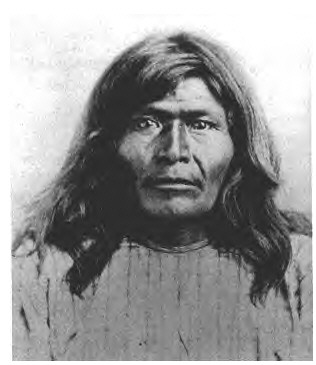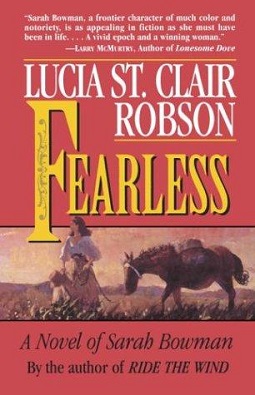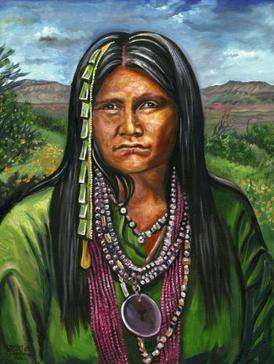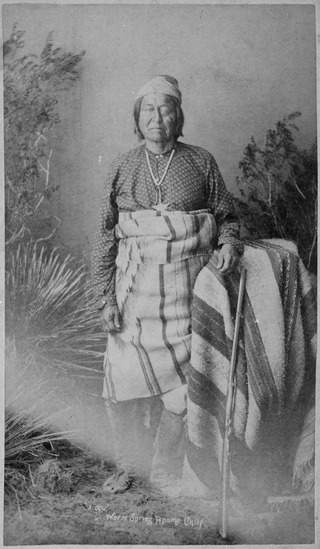
Chiricahua is a band of Apache Native Americans.

Geronimo was a prominent leader and medicine man from the Bedonkohe band of the Ndendahe Apache people. From 1850 to 1886, Geronimo joined with members of three other Central Apache bands – the Tchihende, the Tsokanende and the Nednhi – to carry out numerous raids, as well as fight against Mexican and U.S. military campaigns in the northern Mexico states of Chihuahua and Sonora and in the southwestern American territories of New Mexico and Arizona.

Victorio was a warrior and chief of the Warm Springs band of the Tchihendeh division of the central Apaches in what is now the American states of Texas, New Mexico, Arizona, and the Mexican states of Sonora and Chihuahua.

The Apache Wars were a series of armed conflicts between the United States Army and various Apache tribal confederations fought in the southwest between 1849 and 1886, though minor hostilities continued until as late as 1924. After the Mexican–American War in 1846, the United States inherited conflicted territory from Mexico which was the home of both settlers and Apache tribes. Conflicts continued as new United States citizens came into traditional Apache lands to raise livestock and crops and to mine minerals.
Lozen was a warrior and prophet of the Chihenne Chiricahua Apache. She was the sister of Victorio, a prominent chief. Born into the Chihenne band during the 1840s, Lozen was, according to legends, able to use her powers in battle to learn the movements of the enemy. According to James Kaywaykla, Victorio introduced her to Nana, "Lozen is my right hand ... strong as a man, braver than most, and cunning in strategy. Lozen is a shield to her people".

Mangas Coloradas or Mangus-Colorado, or Dasoda-hae was an Apache tribal chief and a member of the Mimbreño (Tchihende) division of the Central Apaches, whose homeland stretched west from the Rio Grande to include most of what is present-day southwestern New Mexico. He was the father-in-law of Chiricahua (Tsokanende) chief Cochise, Mimbreño chief Victorio, and Mescalero (Sehende) chief Kutu-hala or Kutbhalla. He is regarded as one of the most important Native American leaders of the 19th century because of his fighting achievements against the Mexicans and Americans.
Lucia St. Clair Robson is an American historical novelist. She was married to science fiction novelist Brian Daley. She is a 1982 recipient of the Spur Award for Best Novel of the West.

Fearless, A Novel of Sarah Bowman is a 1998 novel of historical fiction by Lucia St. Clair Robson.

Dahteste was a Chokonen Apache woman warrior.

Gouyen, was a 19th-century Apache woman noted for her heroism.

The San Mateo Mountains are a mountain range in Socorro County, in west-central New Mexico in the southwestern United States. The highest point in the range is West Blue Mountain, at 10,336 ft. The range runs roughly north-south and is about 40 miles (64 km) long. It lies about 25 miles (40 km) north-northwest of the town of Truth or Consequences and about 30 miles (48 km) southwest of Socorro. They should not be confused with the identically named range in Cibola and McKinley counties, north of this range.

Kas-tziden or Haškɛnadɨltla, more widely known by his Mexican-Spanish appellation Nana, was a warrior and chief of the Chihenne band of the Chiricahua Apache. A trusted lieutenant to Cuchillo Negro and Mangas Coloradas, in the 1850s and 1860s he was one of the best known leaders of the Chihenne (Tchiende), along with Tudeevia, Ponce and Loco. He was a nephew of Delgadito, and married a sister of Geronimo.

Apache Kid Wilderness is a 44,626-acre (18,060 ha) Wilderness area located within the Magdalena Ranger District of the Cibola National Forest in the state of New Mexico. Straddling a southern portion of the San Mateo Mountains of southwestern Socorro County, the area is characterized by rugged, narrow, and steep canyons bisecting high mountain peaks exceeding 10,000 feet (3,000 m). The highest peak is West Blue Mountain which reaches an elevation of 3,151 metres (10,338 ft).

Loco was a Copper Mines Mimbreño Apache chief who was known for seeking peace at all costs with the US Army, despite the outlook of his fellow apaches like Victorio and Geronimo.

The Battle of Fort Apache was an engagement of the Apache Wars between the cavalry garrison of Fort Apache and dozens of mounted White Mountain Apache warriors. The battle occurred in eastern Arizona Territory on September 1, 1881.

First Lieutenant Charles Bare Gatewood was an American soldier born in Woodstock, Virginia. He served in the United States Army in the 6th Cavalry after graduating from West Point. Upon assignment to the American Southwest, Gatewood led platoons of Apache and Navajo scouts against renegades during the Apache Wars. In 1886, he played a key role in ending the Geronimo Campaign by persuading Geronimo to surrender to the army. Beset with health problems due to exposure in the Southwest and Dakotas, Gatewood was critically injured in the Johnson County War and retired from the Army in 1895, dying a year later from stomach cancer. Before his retirement he was nominated for the Medal of Honor, but was denied the award. He was portrayed by Jason Patric in the 1993 film Geronimo: An American Legend.

Victorio's War, or the Victorio Campaign, was an armed conflict between the Apache followers of Chief Victorio, the United States, and Mexico beginning in September 1879. Faced with arrest and forcible relocation from his homeland in New Mexico to San Carlos Indian Reservation in southeastern Arizona, Victorio led a guerrilla war across southern New Mexico, west Texas and northern Mexico. Victorio fought many battles and skirmishes with the United States Army and raided several settlements until the Mexican Army killed him and most of his warriors in October 1880 in the Battle of Tres Castillos. After Victorio's death, his lieutenant Nana led a raid in 1881.
Canada Alamosa an Americanized version of the Spanish Cañada Alamosa, is a term historically applied to five geographical features, all in the same immediate area in southwest Socorro and northwest Sierra Counties, New Mexico. In historical texts the name, Canada Alamosa is applied inter-changeably to the five features, and it is often only the context that distinguishes one feature from the other.
Delgadito was a chief (nantan) of the Copper Mines group of Tchihende (Mimbreño) people, one of the three divisions of central Apaches.

The Battle of Tres Castillos, October 14–15, 1880, in Chihuahua State, Mexico resulted in the death of the Chiricahua Apache chieftain Victorio and the death or capture of most of his followers. The battle ended Victorio's War, a 14-month long odyssey of fight and flight by the Apaches in southern New Mexico, western Texas, and Chihuahua. Mexican Colonel Joaquin Terrazas and 260 men surrounded the Apache and killed 62 men, including Victorio, and 16 women and children, and captured 68 women and children. Three Mexicans were killed. Victorio had little ammunition to resist the attack.














